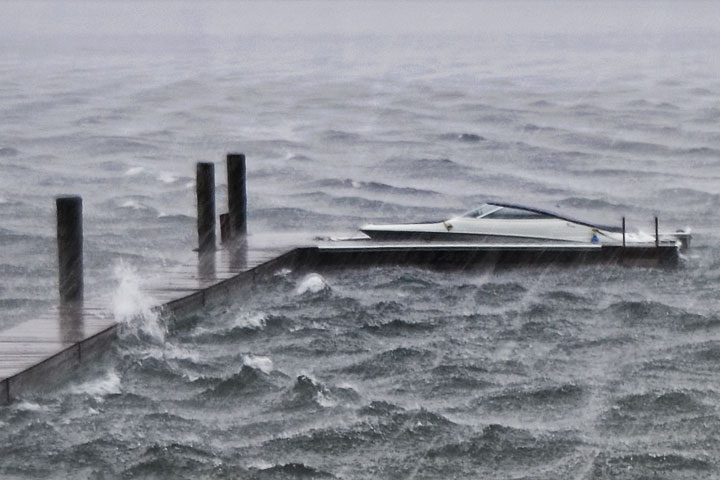The elements raged: Thursday afternoon brought lightning, thunder, graupel, strong west winds, waves, and best of all, clapotis gaufré.
Clapotis is derived from the French, le clapotis, meaning standing waves. Gaufré means waffled. So, together it describes a waffled pattern of waves that don’t travel but stay in one spot. But, describing it, does not explain it.
A search for clapotis on the web produced a recent (2004) additional meaning: a knitted shawl displaying a wavy pattern.
Clapotis (by itself) arises when a uniform train of water waves approaches and is reflected by a hard vertical barrier (as distinct from an irregular one such as rocks or a sloping one such as a beach). As each crest of the reflected waves passes back through a crest of an incoming wave, a very large stationary crest is produced: it does not travel; it stands on a spot and the wave goes up and down. This is assuming the waves approach the reflecting barrier at right angles.
When waves approach and are reflected diagonally, the pattern becomes cross hatched to give clapotis gaufré. That is happening in the picture, below. A train of waves from the west pounds the ramp giving a waffle–like pattern of water towers.
Before becoming very high, the crests of a travelling water wave will break and give white caps (as can be seen beyond the dock). Normally, the crests of clapotis do not break, but merely produce a tower of water. In the picture, below, the crests of the highest waves are being torn apart by the wind.
A uniform train of waves approaches from the right, hits the ramp diagonally and gives a waffle pattern of water towers: clapotis gaufré. In addition there are diagonal streaks of rain cutting across the picture.
